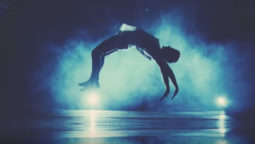I Wanna Be A DJ! Equipment Essentials: Headphones
In case you’ve been living under a rock for the past few years, DJs are now the new rock stars. The DJ industry has seeped into every aspect of pop culture, and now learning to become a DJ has become what becoming a rock guitarist was in the 80’s. From TV advertisements to reality shows, DJing has clawed its way into the mainstream and is here to stay.
Because of the rising popularity in EDM, the numbers of people wanting to learn the secret art-of-making-booties-shake is also on the rise. From beatmatching (synchronizing different BPMs) to mixing (because when you just hit stop on one track and play on another, it’s called Paris Hiltoning), there is quite a lot to learn about this craft. But most importantly, getting the right gear can save you a good deal of time and money.
Over six weeks, we’ll take a tour through the business, checking out all the major players in the DJ gear industry today. We’ll be providing a comprehensive review of the major categories, from headphones to MIDI controllers. We will cover it all so you can make the most informed decision kitting out your DJ arsenal.
Catching up:
Week 1: All-In-One-Controllers
Week 2: DJ Software
Week 3: Media Players
And now, onto this week’s edition…
Week 4: Headphones
The trend of listening to our music on the go has made selling headphones a billion dollar industry, and it seems there are many options to choose from when buying a pair of headphones. Furthermore, when it comes to selecting the right headphone to DJ with there are many choices to be made, based on style and venue. This week we will talk about the different headphone types, brands, and major players in the headphone industry.
When it comes to DJing, there are many types of headphones being used. You can choose from the standard over the ear headphones, ear buds or professional in ear monitors. I have tried all versions and after trying all, I prefer using a standard over-ear DJ headphone when I perform.
There are many players in the over-ear headphone market these days. From Sol Republic to V-Moda, I have found that there are many viable choices. From my view, there aren’t many differences in performance  between most brands, and usually the best selling brand is the one that is the best marketed. So, when making a choice, make sure and listen to the headphone and see if it sounds good to you. If the headphone provides it, take a look at the frequency response chart and use it to see if the headphone will meet your needs.
between most brands, and usually the best selling brand is the one that is the best marketed. So, when making a choice, make sure and listen to the headphone and see if it sounds good to you. If the headphone provides it, take a look at the frequency response chart and use it to see if the headphone will meet your needs.
Depending on the brand, the traditional over-ear DJ headphone usually offers a very loud driver and a limited amount of isolation for your ear. Both features are made to compensate for a loud environment such as a club on concert venue. In my experience, over-ear headphones do not have an accurate frequency response and usually are given a little boost in lower frequencies. The most popular headphones in this group include the Sony MDR-7506 (by far the world’s best selling headphone – sorry Beats by Dre), Pioneer HDJ-1500 and the Audio Technica ATH-M50.
Earbuds have been an interesting thing to see in the club. The first time I saw someone using earbuds, it was by accident. My friend DJ Marty Mar forgot his headphones at home, but still had his earbuds. He used them all night, and after finishing,  found that he liked them so much that he prefers to use them for every gig today.
found that he liked them so much that he prefers to use them for every gig today.
I can sympathize with the reason he uses them, for the sound isolation you get is very good. When using the earbuds, I find that almost all outside conversation is blocked out, and I can focus more on the music coming through. There are a few downsides about using earbuds though. Usually when considering earbuds, you may want to take into account that the frequency curve is usually not accurate. In addition to this, the volume of some brands of earbuds may not be loud enough to contend with a standard monitor found in a club. If you were interested in going the earbud route, I would recommend buying something inexpensive. I have found that the Skullcandy Ink’d line is very good. But if you feel like spending more money, you may look into the Beats Tour or Shure SE425 earbuds.
In-Ear monitoring has normally been something used by on-stage performers such as bands or vocal performers. The setups are normally wireless, and can be tuned on a front of house board in the venue. These setups are now being found in DJ booths worldwide. In-Ear Monitors look very similar to earbuds, and truthfully, mostly everything about them appears the same,  except the features and most importantly the price.
except the features and most importantly the price.
The inside contents of an in-ear monitor are a bit more complex than the traditional earbud. Most earbuds contain only 1-2 drivers while many in-ear monitoring systems contain 3+ drivers, lowpass filters and customizable tips for comfort. Because these systems are normally used on stage, accuracy is of the utmost importance. This is why I believe some of the most sought after touring acts choose to use these as DJ headphones. The price tag is what sets these types of headphones apart from others. You can pay a modest $99 for the Shure 215 SE series, go up to $899 for the Westone ES5 monitors or pay $1,250 for the crown jewel Shure SE846 in-ear monitors.
Thanks for reading. Share this with your friends. And be sure to check back with us next Friday for Part V of I Wanna Be a DJ!
©2013MWFC






Join the discussion
comments powered by Disqus